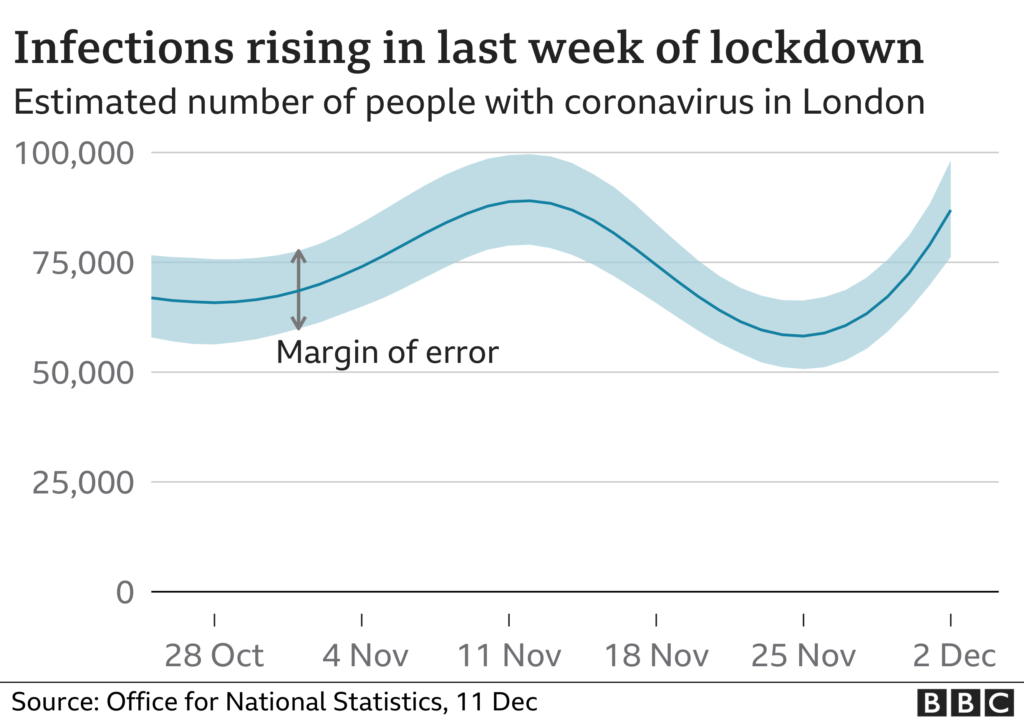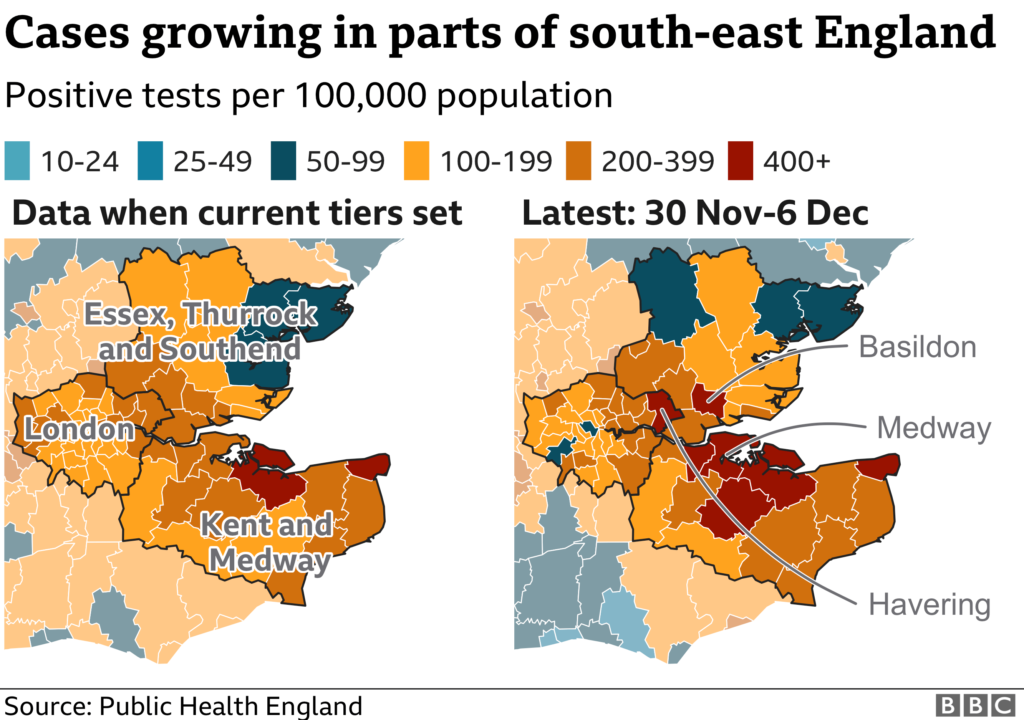Levels of positive tests are rising in London and could be on the up in the East of England, according to data from the Office for National Statistics.
Figures for the week to 5 December, as England's second lockdown was ending, suggest infection levels continued to fall in other regions.
Infection rates are still highest in children of secondary school age, the ONS says.
Across the UK, the picture is mixed, with Wales seeing rising infections.
In Northern Ireland, the percentage of people testing positive continues to fall - while in Scotland it has stayed the same.
The R number - or reproduction number - of the virus is now between 0.9 and 1.0 for the UK - slightly up from 0.8-1.0 last week. But in some regions in the south and east it could be above 1, indicating infections are likely to be growing there.
The ONS figures are one source of data used by the government's scientific advisers to judge the spread of the virus, and take decisions on restrictions on people's daily lives.
They are based on swab tests of thousands of people in households, whether they have symptoms or not. The estimates are thought to give a more accurate picture of how many people are infected with the virus than data on positive tests alone.

Infection levels in London started to rise sharply before the end of lockdown, according to the ONS, after falling in late November.
In all other regions, including the North West and North East, and Yorkshire and the Humber, the percentage of people testing positive is decreasing.
But there are "early signs" rates may be increasing in the east of England, the ONS says.
It estimates:
- one in 115 people have the virus in England
- one in 120 in Scotland
- one in 120 in Wales
- one in 235 in Northern Ireland
Data on cases - or confirmed positive tests, from Public Health England - also suggests the epidemic is growing in parts of London and the south-east of England.
Areas such as Basildon, Medway and Havering are now experiencing more than 400 cases per 100,000 people.
England's tiers system is due to be reviewed on 16 December and there have been suggestions that London should be moved from tier two to tier three to avoid a spike in deaths over Christmas.
Kent is already in tier three while Essex is in tier two.

Latest Stories
-
Bawumia declares ‘I was made for this’ as he leads Africa’s digital agenda at Cambridge
53 seconds -
‘Tight monetary-fiscal coordination is paying off, but may be hurting growth’ – Economist warns
9 minutes -
Biden’s cancer diagnosis is another formidable challenge
12 minutes -
‘Africa’s time is now’- Bawumia inspires with digital vision at Cambridge Conference
19 minutes -
‘Are we sacrificing the environment to save the cedi?’ – Prof. Bokpin quizzes BoG’s gold strategy
41 minutes -
‘Why is a board member doing PR?’ – Ken Thompson on Adongo’s dollar withdrawal comments
1 hour -
‘We should be building reserves, not playing with rates’ – Prof. Bokpin warns of BoG currency strategy
2 hours -
‘This strengthening of the cedi risks undermining local production,’ says Prof Bokpin
2 hours -
‘Cedi’s rally isn’t a blip, but it’s not sustainable,’ says Prof Bokpin
3 hours -
Apple boosts India’s factory hopes – but a US-China deal could derail plans
4 hours -
Private involvement in ECG urgent or sector may collapse, says Prof. Bokpin
4 hours -
‘Energy crisis beyond politics’ – Prof Bokpin urges urgent reform under IMF mandate
5 hours -
Faith Ladies come from behind to beat Jonina Ladies to win Women’s FA Cup
5 hours -
‘ECG’s collection losses at 15%, distribution at 40% not sustainable’ – Prof Bokpin warns
5 hours -
‘You’re not powering an 8-Hour economy, but promising 24 Hours?’ – Prof Bokpin on energy sector failures
6 hours

